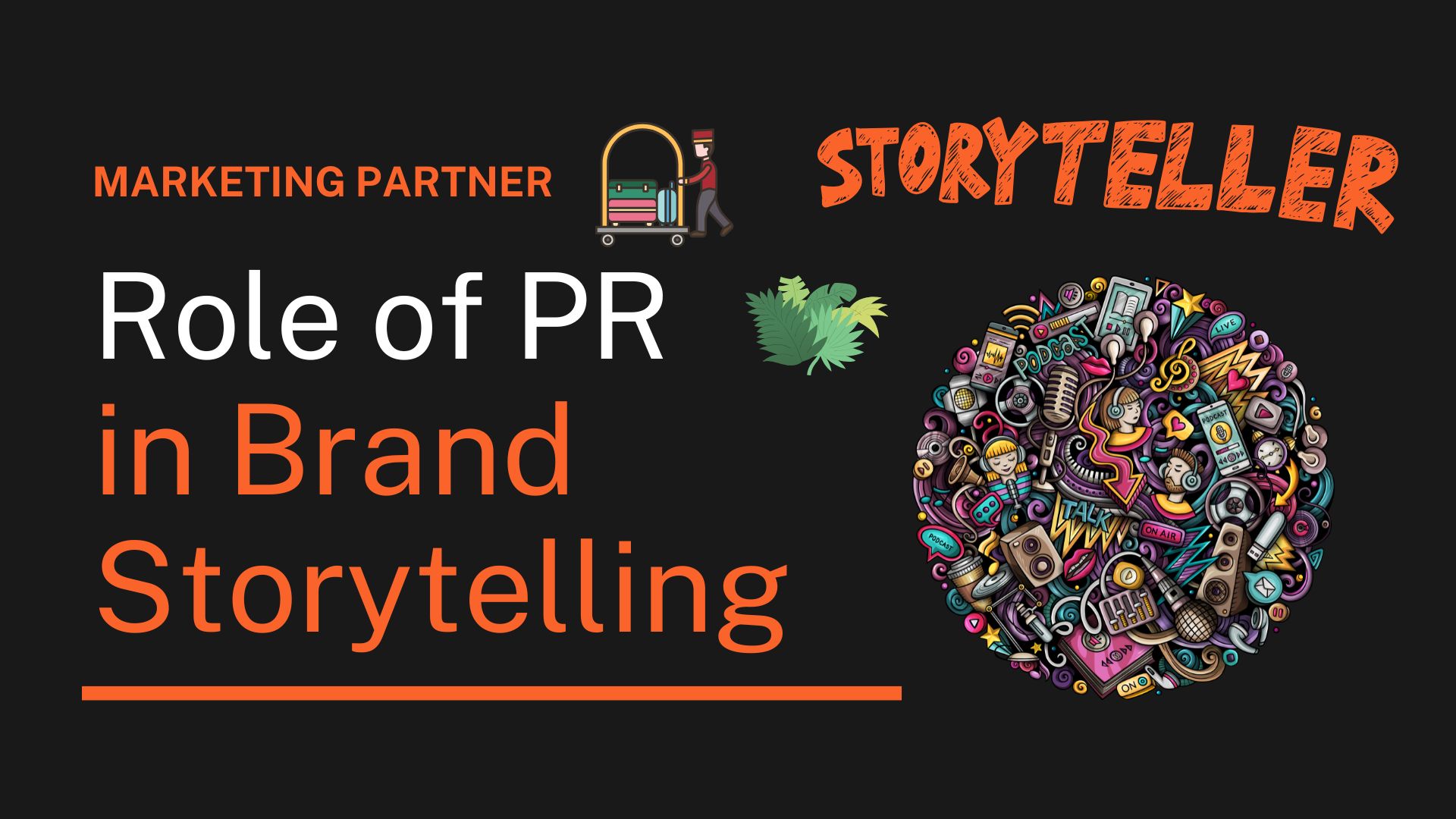In today’s crowded marketplace, brands don’t just compete on product quality or pricing, they compete on stories. A brand’s story is often the most powerful way to stand out, build trust, and form lasting emotional connections with audiences.
But who shapes and spreads these stories? That’s where Public Relations (PR) comes in. PR is more than press releases, it’s the strategic craft of managing how a brand’s story is told, interpreted, and amplified across audiences. Done right, PR-driven storytelling can boost credibility, strengthen reputation, and humanize a business.

What is Brand Storytelling?
Brand storytelling is the strategic use of narrative techniques, characters, conflict, resolution, and emotion to communicate a brand’s purpose, values, and personality.
Unlike traditional advertising, which focuses on features and benefits, storytelling connects with audiences on a deeper, emotional level.
Storytelling is a mighty force, shaping how we feel about brands. When brands tell compelling stories, they become more than just products – they become an important part of our lives
Key elements of brand storytelling:
- Authenticity – real stories resonate more than scripted campaigns.
- Consistency – the same narrative across press, social, and events.
- Emotional connection – stories make people feel, not just think.
- Purpose-driven – aligning brand values with social and cultural movements.
Stat: 92% of consumers want brands to make ads that feel like stories, not promotions.
Read also: Brand Storytelling Agency: How to Create a Strong Brand Story with Strategic Copywriting
The Role of PR in Brand Storytelling
Public Relations acts as the bridge between a brand’s internal narrative and public perception. While marketing often aims for short-term sales, PR works to establish long-term credibility and reputation.
Core roles of PR in storytelling:
- Crafting narratives aligned with brand identity.
- Amplifying stories through earned media, influencers, and events.
- Managing crises by reshaping negative narratives.
- Building thought leadership by positioning executives as credible voices.
Comparison: PR vs. Marketing in Storytelling
| Aspect | PR’s Role | Marketing’s Role |
| Focus | Reputation & credibility | Sales & conversions |
| Storytelling Goal | Build trust & emotional connection | Persuade & drive action |
| Channels | Earned media, press, influencers | Paid ads, social media, direct campaigns |
| Longevity | Long-term reputation | Short-term campaign results |
How PR Shapes a Brand’s Story
PR professionals use a multi-layered approach to build and maintain a brand narrative:
- Message Development – Defining key messages that align with brand values.
- Media Relations – Securing stories in trusted publications adds credibility.
- Influencer & Thought Leadership – Partnering with respected voices amplifies reach.
- Events & Activations – Live experiences reinforce brand narratives.
- Crisis Management – PR reframes negative stories into lessons of resilience.
Why PR-Driven Storytelling Builds Trust

In an era of information overload, consumers are skeptical of direct advertising. PR offers a more credible approach.
1. Earned Media = Credibility
People trust what journalists, reviewers, and influencers say more than brand ads.
2. Consistency Across Channels
PR ensures a unified narrative across media interviews, social platforms, and press events.
3. Human-Centered Stories
By spotlighting employees, customers, or leaders, PR builds emotional bonds.
Benefits of PR in Brand Storytelling
- Builds long-term credibility vs. short-term sales
- Strengthens emotional engagement with audiences
- Provides resilience during crises
- Improves visibility in trusted media outlets
The Future of PR in Storytelling
PR is evolving with technology and consumer expectations.
- AI & Data-Driven Insights → Personalized storytelling at scale.
- Purpose-Driven Campaigns → Consumers expect brands to take social stances.
- Interactive & Experiential PR → From AR campaigns to immersive brand events.
Read more: Top Employer Branding Strategies Every Company Should Know
PR Storytelling Channels (2025):
- Earned media: 40%
- Influencer PR: 25%
- Brand journalism: 20%
- Experiential campaigns: 15%
How to Use PR to Improve Your Brand Story
If you’re a business looking to harness PR for storytelling, here’s a practical roadmap:
- Define Core Values & Mission – What does your brand stand for?
- Build a Narrative – Turn values into a relatable story.
- Leverage PR Tools – Press releases, media kits, thought leadership articles.
- Work with Influencers & Journalists – Earned visibility adds credibility.
- Measure Impact – Track brand mentions, sentiment analysis, and media reach.
Conclusion
PR is not just about managing publicity, it’s about shaping stories that resonate and last. In a world where consumers are bombarded with ads, storytelling through PR helps brands cut through the noise with credibility, trust, and emotional depth.
FAQs
How does PR build trust for brands?
Through earned media, thought leadership, and consistent narratives that audiences find more credible than ads.
Can small businesses use PR for storytelling?
Yes. Even local press, customer testimonials, and founder stories can shape perception and trust.
What are some examples of successful PR brand storytelling?
Airbnb’s host stories, Dove’s Real Beauty, and Tesla’s innovation narrative.
Why is PR more credible than advertising?
Because it relies on third-party validation—journalists, influencers, or real customers—making it less biased.





